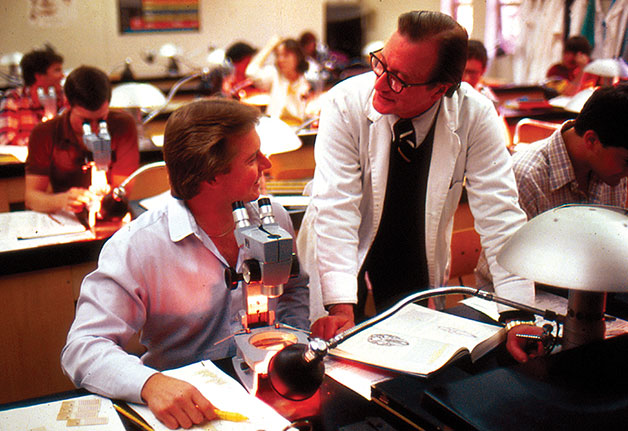This is not a list of the best teachers. That’s such a subjective question, and not many people would be able to compare the teaching abilities of each of the faculty members on this list. Rather, this list has on it individuals who, in the course of their time at Wofford, had a significant influence on some aspect of the college. Some were the leading scholars in their fields. Some brought something new to the college. Some had influence as the mentors for a generation of alumni. To avoid making judgments about the living, everyone on this list is deceased.
H. Donald Dobbs, professor of biology from 1955 to 1995, started the careers of a generation of physicians. His Biology 111 course made him respected, loved and feared. Alumni still tell Don Dobbs stories at reunion events. He was part of a generation of faculty members who built the strong programs in the sciences we have at Wofford today.
John W. Harrington, professor of geology from 1963 to 1981, was an innovative teacher. He also had a significant impact on his students, and his books, “To See a World” and “Dance of the Continents,” were organized around trying to get his readers to understand science. More than teaching science, Harrington mentored students and taught a way of looking at the world and understanding it.
James A. Chiles, professor of German from 1914 to 1947, wrote widely adopted German textbooks, including “First Book in German” and “German Prose Composition.” While at Wofford he founded a group called Deutscher Verein, which evolved into the national German honor society Delta Phi Alpha. Wofford holds the alpha chapter.
David Duncan Wallace, Class of 1894, professor of history from 1899 to 1947, was a prolific author and scholar and was by all accounts the leading South Carolina historian of his day. He returned to Wofford after earning his Ph.D. in history at Vanderbilt, and his four-volume “History of South Carolina” is detailed enough that no one will ever write anything like it again. He also wrote the centennial history of Wofford.
Charles F. Nesbitt, Class of 1922, professor of religion from 1939 to 1966, taught and influenced a generation of clergy in and around South Carolina. With his Ph.D. from the University of Chicago, Nesbitt helped transform the teaching of religion by bringing critical commentary and analysis to teaching Biblical and other topics.
Lewis P. Jones, Class of 1938, professor of history from 1946 to 1987, was the first holder of the William R. Kenan Jr. professorship. He was a widely published author, an expert in South Carolina and local history and a leading member of the faculty in the late 20th century. He also was remembered as one of the outstanding teachers at the college.
Kenneth D. Coates, professor of English from 1928 to 1969. Along with his longevity, Coates helped start creative and journalistic writing at Wofford and guided student publications. He edited the Spartanburg Journal during World War II and also edited the college’s World War II alumni newsletter. In his older years, he relished his role as a campus character.
Constance Armitage Antonsen, associate professor of fine arts. Antonsen began teaching art history courses at Wofford in 1962 and continued well into the 1990s. She was not the first woman to teach at Wofford, but she was one of the first instructors to teach courses in art history, opening up some new subject materials to a student body that had not often been exposed to them. She was a legend, with oft-told stories of her exploits saving artifacts from the Nazis during World War II. She also taught fencing and was active in national Republican Party affairs.
John Q. Hill, class of 1947, professor of mathematics from 1953 to 1972, had a remarkable personal story. Ill health kept him from attending school until age 11, and yet after graduating from Wofford, he earned a Rhodes Scholarship. He is remembered as one of the college’s really great teachers, as one student said, “Everything looks easy when he explains it.”
And who is the tenth? It’s your favorite professor, the one who made you see the world in a different way, encouraged you to work harder or gave you direction into your chosen career.
by Dr. Phillip Stone ’94, college archivist, Fall 2016
